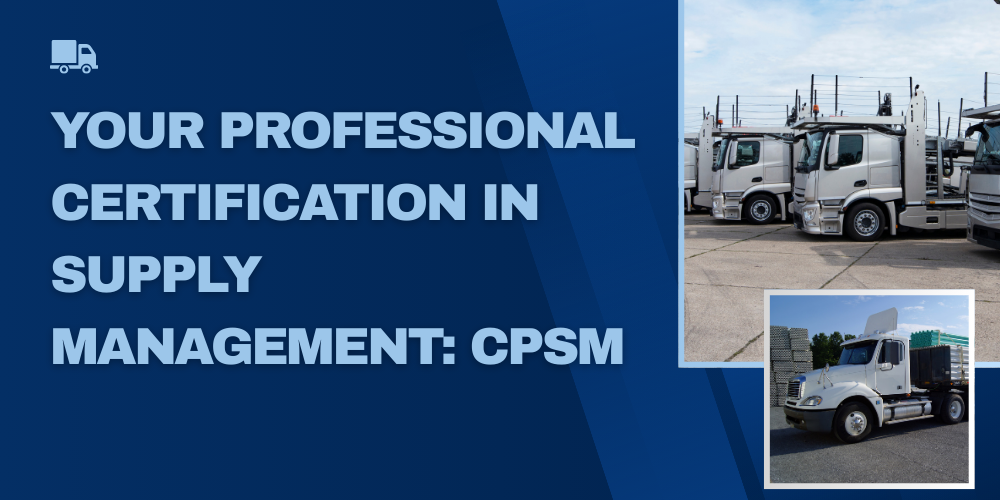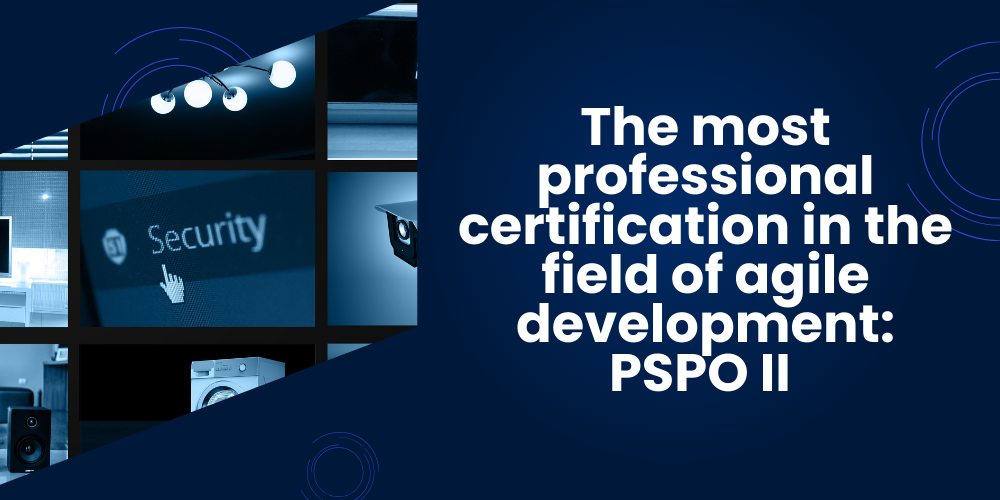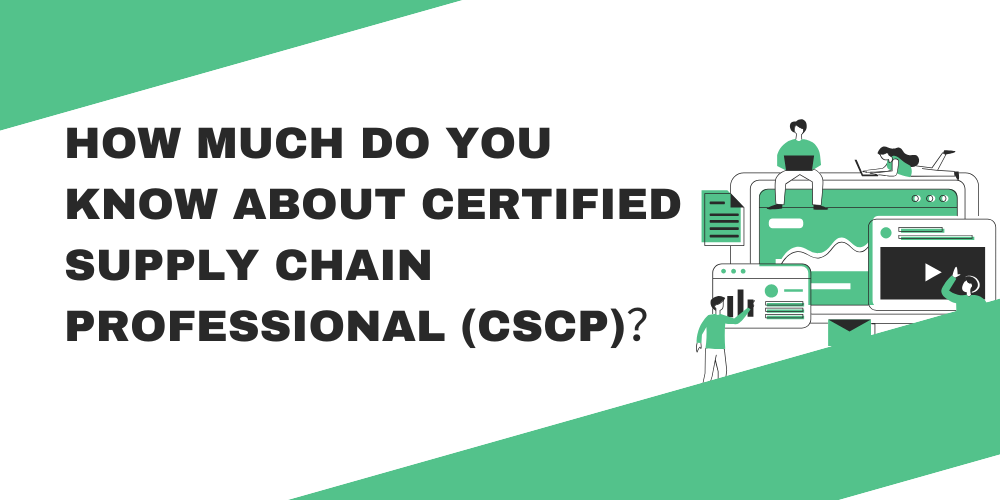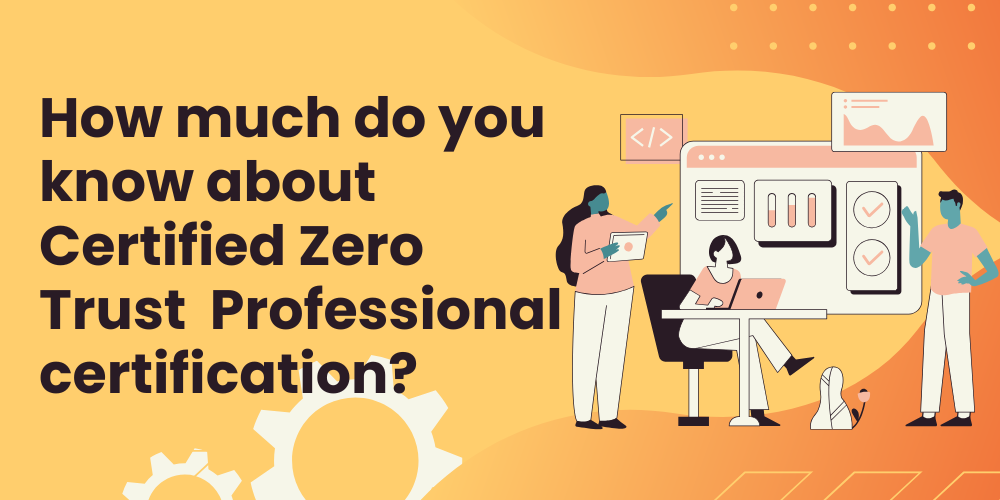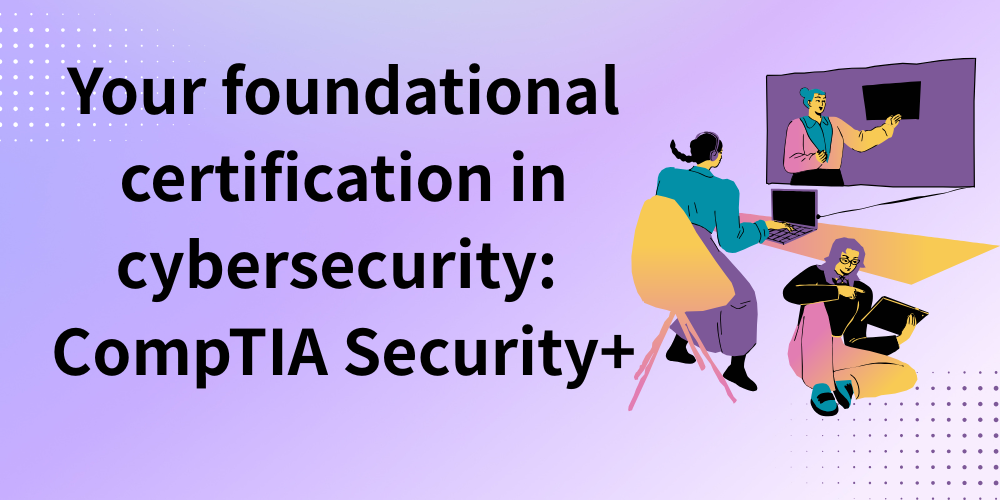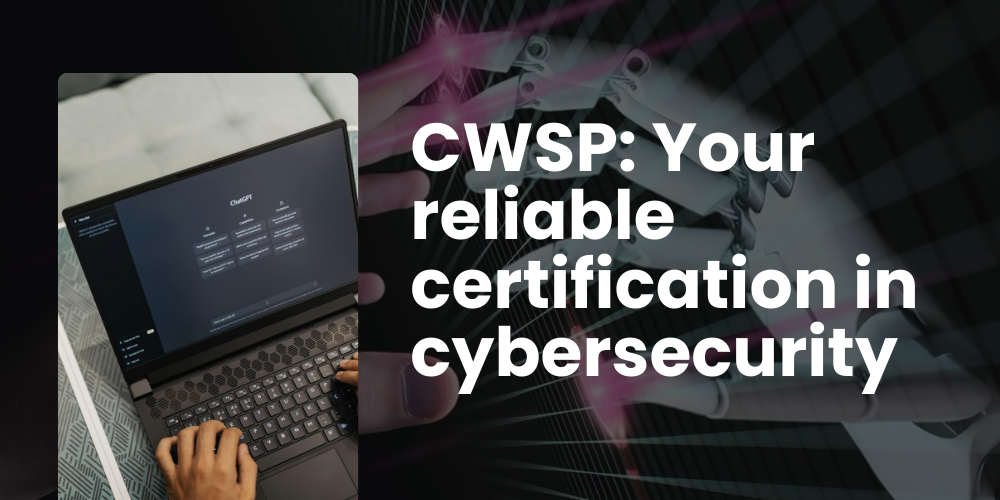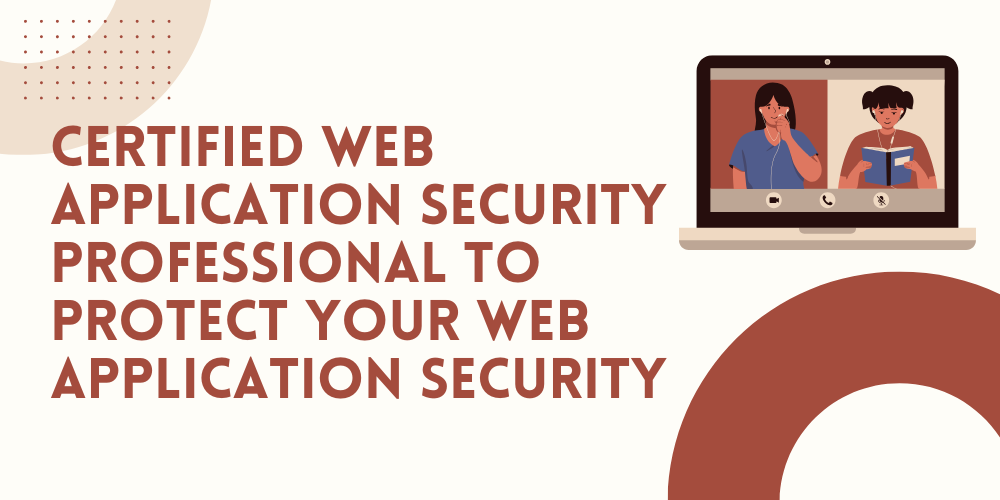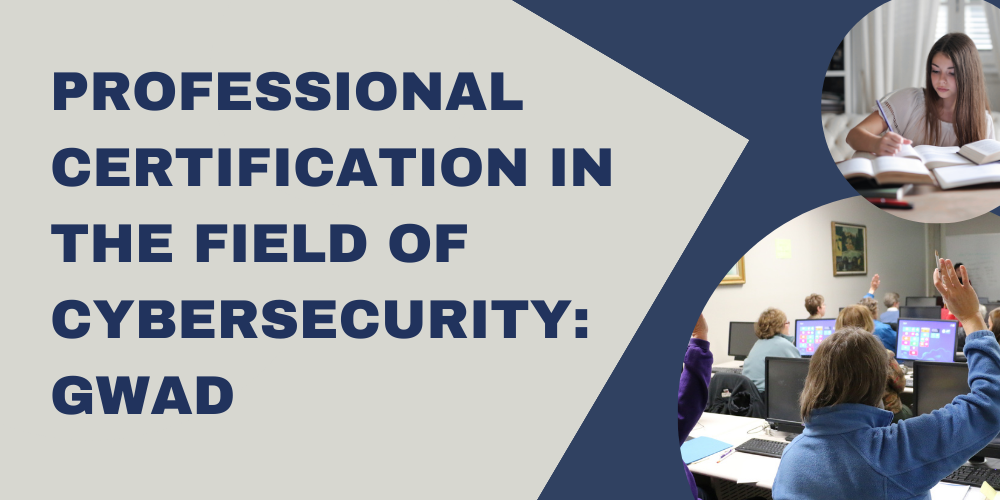TRUSTED BY THE SMARTEST TEAMS IN THE WORLD FOR CERTIFIED CANDIDATES
SPOTO Blogs
Useful learning materials to become certified IT personnel
-
- 420
- SPOTO 2
- 2025-09-22 14:55
-
- 414
- SPOTO 2
- 2025-09-19 15:03
-
- 431
- SPOTO 2
- 2025-09-19 14:53
-
- 448
- SPOTO 2
- 2025-09-18 14:07
-
- 441
- SPOTO 2
- 2025-09-17 14:37
-
- 462
- SPOTO 2
- 2025-09-16 10:59
-
- 471
- SPOTO 2
- 2025-09-15 13:40
-
- 468
- SPOTO 2
- 2025-09-12 14:08
-
- 540
- SPOTO 2
- 2025-09-11 11:24
TRUSTED BY THE SMARTEST TEAMS IN THE WORLD FOR CERTIFIED CANDIDATES
SPOTO Blogs
Useful learning materials to become certified IT personnel
-
- 420
- SPOTO 2
- 2025-09-22 14:55
Table of Contents1. Introduction to the CPSM certification2. The Competitive Edge of a CPSM Certification3. Core Components of the CPSM Certification4. What are the requirements to be a Certified Professional in Supply Management?5. Comparable Certifications to Certified Professional in Supply Management certification Certified Professional in Supply Management (CPSM) is a valuable certification in the field of supply management that enhances practitioners' supply management expertise. 1. Introduction to the CPSM certification The Certified Professional in Supply Management (CPSM), a globally recognized and authoritative certification in the supply management field, is offered by the Institute for Supply Management (ISM). It verifies your expertise, skills, and professional ethics across the entire supply management process, enabling you to achieve higher levels of professional development in this field. In today's complex and volatile business environment, supply management encompasses multiple key aspects, including procurement, supplier relationship management, logistics, contract management, and cost control. It plays a vital role in ensuring material supply, controlling costs, and improving operational efficiency. The core of the CPSM certification is to cultivate and certify professionals who are proficient in all aspects of supply management. These professionals, like the "controllers" of a company's supply management operations, can deeply participate in all aspects of supply management. Drawing on their professional knowledge and skills, they develop sound procurement strategies, optimize supplier networks, manage logistics and distribution details, rigorously manage contract terms, and precisely control costs. 2. The Competitive Edge of a CPSM Certification Obtaining CPSM certification demonstrates that you have undergone professional assessment and possessed standardized supply management knowledge and skills. This makes you highly competitive and attractive for job applications across all levels of supply management. The process of preparing for and obtaining the certification encourages you to systematically and comprehensively learn about all aspects of supply management, from fundamental concepts to in-depth study of specific aspects such as procurement management, supplier management, and contract management. This builds a solid foundation for further study and practice in supply management, facilitating your future career development. For those seeking to deepen or expand their careers in supply management, the CPSM certification is a powerful catalyst. It can help practitioners open doors to more job opportunities. As more and more people obtain CPSM certification, the entire supply management industry will become more scientific and advanced in terms of management concepts, methods and technical applications, which will help improve the overall efficiency and competitiveness of corporate supply management, and thus promote the global supply management industry to develop in a more efficient, intelligent and sustainable direction. 3. Core Components of the CPSM Certification This certification system builds a comprehensive knowledge system for supply management, comprehensively covering core knowledge and practical skills across multiple aspects. It's ideal for those pursuing careers in procurement management, supply chain operations, logistics coordination, and supply strategy. Through this program, you'll gain a deep understanding of the definition and scope of supply management, as well as its critical role in enterprise cost control and operational continuity. You'll master procurement strategy development, process optimization, and compliance enforcement to achieve demand matching and cost savings. You'll also become proficient in supplier screening, evaluation, and relationship maintenance, enabling you to establish a stable and reliable supply partnership system. Secondly, you'll learn to plan logistics networks, optimize transportation and warehousing operations, implement inventory control using methods like EOQ and ABC classification, master contract drafting, negotiation, and contract performance monitoring to mitigate risks and protect corporate interests, analyze and control supply costs, and use financial indicators to support management decisions. Finally, you'll develop an understanding of leadership practices in teamwork and cross-departmental coordination, uphold professional standards of integrity and fairness, and gain exposure to innovative practices and improve the efficiency and sustainability of supply management. 4. What are the requirements to be a Certified Professional in Supply Management? (1) Qualification prerequisites: ISM officials generally recommend that you have some work experience in related fields at least three years of relevant experience. Because the knowledge and skills required for the CPSM certification are in-depth and complex, practical work experience helps you better understand and master these areas. By integrating theoretical knowledge with practical application, you can better prepare for the exam and apply what you've learned in real-world situations. While there are no strict educational requirements, having an associate's degree or higher will be beneficial for exam preparation, especially if you have a background in management, economics, or engineering. This foundational theoretical knowledge will make it easier for you to understand the concepts and principles of supply management and more quickly grasp the key points during your studies. 、 (2) Training and examinations: According to the official ISM standard, you must score 400 or higher out of 500 to pass the corresponding module. Only after passing all three modules can you obtain the CPSM certification. The exam fee is approximately US$300-400 per module, and the total cost of taking all three modules is approximately US$900-1200. (3) Qualification maintenance: The CPSM certificate is valid for 3 years and in order to maintain the validity of the certificate, you need to accumulate certain credits by participating in continuing education activities officially recognized by ISM during the validity period. 5. Comparable Certifications to Certified Professional in Supply Management certification CIPS (Chartered Institute of Procurement & Supply) CSCP (Certified Supply Chain Professional) CPIM (Certification in Planning and Inventory Management) SCMP (Supply Chain Management Professionals)   -
- 414
- SPOTO 2
- 2025-09-19 15:03
Table of Contents1. Introduction to the PSPO II certification2. The Competitive Edge of a PSPO II Certification3. Core Components of the PSPO II Certification4. What are the requirements to be a PeopleCert Scrum Product Owner II?5. Comparable Certifications to PeopleCert Scrum Product Owner II certification PeopleCert Scrum Product Owner II (PSPO II) is a professional certification in the field of agile development dedicated to improving your agile product management expertise. 1. Introduction to the PSPO II certification The PeopleCert Scrum Product Owner II certification, offered by PeopleCert, focuses on the product owner role within agile development. It validates your expertise and practical skills in applying the Scrum framework to product management, maximizing product value, and effectively coordinating resources. It is highly recognized and plays a vital role in agile development and product management. In today's rapidly changing market, companies must be able to quickly respond to demand and efficiently iterate products to remain competitive. Agile development methodologies, particularly the Scrum framework, are widely used. The core of the PeopleCert Scrum Product Owner II certification is to cultivate and certify professionals who can accurately grasp product direction within agile projects, deeply understand user needs, and expertly apply the Scrum framework to fulfill the responsibilities of a product owner. These professionals are like "product navigators" in agile projects. They are responsible for defining the product vision, formulating product strategy, and converting abstract business goals into specific and implementable product features and functions. 2. The Competitive Edge of a PSPO II Certification As a highly influential global certification organization, PeopleCert's PeopleCert Scrum Product Owner II certification is highly respected and authoritative within the agile development and product management industries. Earning this certification demonstrates that you have undergone rigorous professional assessment and possess the knowledge and skills necessary for agile product management that meets high industry standards. This will enhance your competitiveness and attract more employers when applying for highly specialized positions such as agile product management and product ownership. The PSPO II certification focuses on the critical role of product owner in agile development and is a valuable stepping stone for transitioning from traditional product management and project management roles to senior positions in agile product management. By earning the PeopleCert Scrum Product Owner II certification, you can broaden your career path and often enjoy a significant salary increase. The process of preparing for and obtaining the certification requires you to systematically and comprehensively acquire the knowledge and skills relevant to the product owner role in agile development. This includes in-depth study and practical training across all aspects of the process, from fundamental agile concepts and product owner responsibilities to product management and team collaboration. This will enable you to better navigate increasingly complex agile project environments and diverse product management scenarios, playing a key role in ensuring successful product delivery and maximizing product value. Agile development technologies and concepts are rapidly evolving, and product management methods and practices are also constantly changing. The lifelong validity of the PeopleCert Scrum Product Owner II certification does not mean you can stop learning. Instead, it forces you to continuously monitor industry trends, acquire new knowledge and skills, and stay abreast of industry developments, ensuring your professional competence remains relevant to the ever-changing landscape of agile development. This includes keeping up with cutting-edge content such as new agile practices and the latest product management cases. 3. Core Components of the PSPO II Certification This certification system builds a comprehensive knowledge base for the product owner role in agile development, comprehensively covering core competencies from agile fundamentals and value management to team collaboration and handling complex projects. It's ideal for those seeking to become a Product Owner, Agile Coach, or enhance their product management skills. First, through this course, you'll gain a deep understanding of the core values and principles of agile, master the core roles, activities, and artifacts of the Scrum framework, clearly understand the advantages of agile in responding to complex and changing requirements, clearly understand the Product Owner's role as the person who determines product value, master the key responsibilities of managing the Product Backlog, prioritizing, defining requirements, and accepting increments, and learn to use tools such as cost-benefit analysis and user story mapping to assess and prioritize value, thereby maximizing product value delivery. Secondly, you'll master communication skills in sprint planning, daily stand-ups, reviews, and retrospectives, providing your team with clear goals, timely support, and effective feedback. You'll also be able to identify and analyze different stakeholders, coordinate expectations through effective communication, manage feedback, and reach consensus, ensuring ongoing product support. Finally, you'll develop the ability to collaborate with multiple teams and navigate complex environments. You'll master methods for maintaining consistent goals and managing dependencies across multiple Scrum teams, and possess the ability to flexibly adjust strategies and advance product implementation in a changing environment. 4. What are the requirements to be a PeopleCert Scrum Product Owner II? (1) Qualification prerequisites: PeopleCert recommends that you have a basic understanding of project management, product management, or software development. Familiarity with basic project processes, product lifecycles, and fundamental software development concepts will help you better understand and master the agile development and product owner roles involved in the PeopleCert Scrum Product Owner II exam. While there's no strict work experience requirement, prior experience working on agile projects or in product management will be beneficial for exam preparation. This practical work experience will provide a more intuitive understanding of the product owner's role and responsibilities in real-world scenarios, the various situations they face, and how to apply relevant knowledge and skills to solve problems, helping you prepare for the practical aspects of the exam. (2) Training and examinations: The PeopleCert Scrum Product Owner II exam typically lasts 1.5 hours and consists of approximately 40 questions, primarily consisting of single-choice and multiple-choice questions. It assesses your understanding, application, and analytical skills across all aspects of the product owner role in agile development, verifying your professional competence. According to PeopleCert's official standards, you must meet certain assessment requirements to pass the exam. These requirements typically require you to demonstrate professional competence in fulfilling product owner responsibilities, product management, and team collaboration, accurately completing tasks, and clearly explaining the rationale behind each operation, demonstrating your ability to independently assume product owner responsibilities. (3) Qualification maintenance: The PCPO II certificate is valid for life and does not require renewal or other maintenance. However, it is recommended that you continue to monitor industry trends in agile development and acquire new knowledge and skills to keep your professional competence relevant to industry developments. 5. Comparable Certifications to PeopleCert Scrum Product Owner II certification ICAgile Certified Professional in Agile Product Management (ICP-APM) Certified Scrum Product Owner (CSPO) PMI Agile Certified Practitioner (PMI-ACP) -
- 431
- SPOTO 2
- 2025-09-19 14:53
Table of Contents1. Introduction to the CSCP certification2. The Rewards of Being a Certified Supply Chain Professional3. Overview of the CSCP Certification4. What are the requirements to be a Certified Supply Chain Professional?5. Comparable Certifications to Certified Supply Chain Professional certification 1. Introduction to the CSCP certification The Certified Supply Chain Professional (CSCP), a highly authoritative and recognized professional certification offered by ASCM, aims to help supply chain practitioners gain a deep understanding of the comprehensive knowledge and skills of supply chain management, enabling them to better navigate the complex and ever-changing supply chain environment and enhance their professional expertise and practical capabilities. Amidst the global economic integration and digitalization, it encompasses multiple interconnected processes, including procurement, production, warehousing, logistics, and sales. Changes in any one link can impact the efficiency and effectiveness of the entire supply chain. The core of the CSCP certification is to cultivate and certify professionals who are able to strategically plan, integrate, optimize, and effectively manage supply chains. These professionals are like "conductors" in the supply chain field, possessing deep insight into market demand fluctuations and precise control over the coordinated operations of all supply chain links. By formulating scientifically sound supply chain strategies and applying advanced management techniques and tools, they can effectively address challenges such as cost fluctuations, demand uncertainty, and supply disruptions, enhancing the overall competitiveness of the supply chain and ensuring sustainable development for businesses in the face of fierce market competition. 2. The Rewards of Being a Certified Supply Chain Professional As a globally renowned professional organization for supply chain management, the CSCP certification, offered by the Association for Supply Chain Management (ASCM), is highly respected and recognized within the supply chain management industry. Obtaining this certification demonstrates that you have been professionally assessed and have mastered standardized supply chain management knowledge and skills. This makes you more competitive and attractive for job applications across all levels of supply chain management. The process of preparing for and obtaining the certification encourages you to systematically and comprehensively learn about supply chain management, from fundamental concepts to detailed understanding of each aspect. This provides a solid foundation for further research and practice in supply chain management, facilitating your future career development. For those seeking to deepen or expand their careers in the supply chain field, the CSCP certification is a powerful catalyst. It can open doors more job opportunities, and if you participate in higher-level supply chain projects or take on more prominent supply chain management positions, your salary and benefits will often increase accordingly. As more and more practitioners obtain CSCP certification, the entire supply chain industry will become more scientific and advanced in terms of management concepts, methods and technical applications, which will help improve the overall efficiency and competitiveness of corporate supply chains, and thus promote the global supply chain industry to develop in a more efficient, intelligent and sustainable direction. 3. Overview of the CSCP Certification The CSCP certification system builds a comprehensive knowledge system for supply chain management, comprehensively covering core knowledge and practical skills from strategic planning to operational execution, from risk control to digital transformation. It's ideal for those pursuing careers in supply chain planning, supply chain analysis, and digital transformation. Through this program, you'll learn to develop supply chain models aligned with corporate strategy, master network design, node planning, and collaborative optimization methods, and build an efficient and flexible overall architecture. Secondly, you'll become more familiar with demand collection and analysis channels, master qualitative and quantitative forecasting methods, and establish a demand-driven operational system to achieve precise response and inventory optimization. Finally, during the exam, you will learn to plan logistics networks and optimize distribution routes, master inventory control strategies, balance supply security and cost efficiency, identify internal and external risks and evaluate their levels, formulate avoidance, reduction, transfer and other response strategies, improve supply chain resilience and stability, understand ERP, SCM and other systems and the application of big data, AI, and blockchain, and master the implementation path and strategy of supply chain digital transformation. 4. What are the requirements to be a Certified Supply Chain Professional? (1) Qualification prerequisites: ASCM officials generally recommend that you have some work experience in related fields such as supply chain, logistics, procurement, and production operations, generally requiring at least three years of relevant work experience. While there are no strict educational requirements, having an associate's degree or higher will be beneficial for exam preparation. This is especially true for those with a background in management, economics, or engineering. Their foundational theoretical knowledge may make it easier for them to understand supply chain management concepts and principles, allowing them to grasp key points more quickly. (2) Training and examinations: According to the official ASCM standard, candidates must achieve a score of 75% to pass the exam. The exam fee is approximately US$1,195. (3) Qualification maintenance: The CSCP certificate is valid for three years and to maintain the certificate's validity, you must accumulate a certain number of credits through ASCM-approved continuing education activities during this period. 5. Comparable Certifications to Certified Supply Chain Professional certification CPSM (Certified Professional in Supply Management) CIPS (Chartered Institute of Procurement & Supply) SCMP (Supply Chain Management Professionals) CPIM (Certification in Planning and Inventory Management) CLTD (Certification in Logistics, Transportation and Distribution) CSCP (Certified Supply Chain Professional) -
- 448
- SPOTO 2
- 2025-09-18 14:07
Table of Contents1. Introduction to the CZTP certification2. The Competitive Edge of a CZTP Certification3. Core Components of the CZTP Certification4. What are the requirements to be a Certified Zero Trust Professional?5. Comparable Certifications to Certified Zero Trust Professional certification Certified Zero Trust Professional is also a reliable certification in the field of cybersecurity for enterprises to screen and cultivate professional zero trust talents. 1. Introduction to the CZTP certification Certified Zero Trust Professional (CZTP), a Zero Trust certification offered by the Cloud Security Alliance (CSA), validates your expertise and practical skills in Zero Trust concepts, architecture, technical applications, and implementation. It is highly recognized and increasingly important in industries such as cybersecurity and digital transformation. In today's rapidly evolving digital landscape and increasingly complex and dynamic cyber threats, the traditional perimeter-based security model is increasingly unable to meet the needs of enterprises for information security, leading to the emergence of the Zero Trust concept. The Certified Zero Trust Professional (CZTP) certification aims to cultivate and certify professionals who deeply understand the core concepts of Zero Trust and master the construction and implementation of Zero Trust architectures. This certification helps enterprises break through traditional perimeter-based thinking and build a new, dynamic security system encompassing multiple dimensions, including identity, devices, networks, and applications, based on the principle of "never trust, always verify." These professionals are like the "architects" of the company's digital security line. They can delve into various aspects of the company's information system planning, security policy formulation, technology selection and deployment, and use zero-trust related knowledge and skills to effectively respond to various security risks such as data leakage, internal threats, external attacks, etc., to ensure the security of the company's digital assets and the stable operation of its business. 2. The Competitive Edge of a CZTP Certification As an internationally influential professional organization in the fields of cloud security and zero trust, CSA's Certified Zero Trust Professional (CZTP) certification is highly respected and respected within the industry. Obtaining this certification demonstrates that you have undergone rigorous professional assessment and possessed the expertise and skills necessary to meet high industry standards for zero trust. The CZTP certification focuses on the emerging and critical field of zero trust, providing a valuable stepping stone for transitioning from traditional cybersecurity roles to higher-level positions such as zero trust specialists and senior security architects. The process of preparing for and obtaining the certification encourages you to fully immerse yourself in the practical application and operation of zero trust. From theoretical foundations and architectural design to technical application and implementation, you will be able to better address increasingly complex cybersecurity threats and diverse zero trust application scenarios, playing a key role in ensuring enterprise network security and stable business operations. Cybersecurity technology is rapidly evolving, and the concepts, techniques, and application scenarios of Zero Trust are also constantly changing. The long-term validity of the CZTP certification and the encouragement of continuing education encourage you to continuously monitor industry trends, acquire new knowledge and skills, and stay abreast of industry developments. This ensures your professional competence remains relevant to the ever-changing landscape of cybersecurity, including keeping up with cutting-edge content such as emerging Zero Trust technologies and the latest industry application cases. 3. Core Components of the CZTP Certification The CZTP certification system builds a comprehensive knowledge system for Zero Trust security, comprehensively covering key areas from core concepts to architectural design, from technical implementation to industry practices. It's ideal for those working in network security architecture, security operations, security management, and digital transformation. Through this course, you'll gain a deep understanding of the core concept of "never trust, always verify," grasp the fundamental differences between zero trust and traditional perimeter security models, and understand its development history and unique value in modern hybrid office and multi-cloud environments. Furthermore, you'll become familiar with the identity-centric Zero Trust framework and understand the roles and synergies of key components such as Identity and Access Management (IAM), Software-Defined Perimeter (SDP), microsegmentation, and Message Security Gateway (MSG). Secondly, you'll also learn how to formulate dynamic, granular access control and authorization policies, and master security operations methods based on continuous trust assessment to achieve effective policy execution and closed-loop optimization. Finally, you will understand the synergy between zero trust and cloud computing, the Internet of Things and existing security systems, and have the ability to integrate protection in complex technical environments and build an integrated security line of defense. 4. What are the requirements to be a Certified Zero Trust Professional? (1) Qualification prerequisites: CSA officials recommend that you have a basic understanding of cybersecurity fundamentals, including familiarity with common network protocols, operating systems, and basic cybersecurity concepts. This foundational knowledge will help you better understand and master the Zero Trust expertise and skills required for the CZTP. While there's no strict work experience requirement, prior experience in cybersecurity will be beneficial for exam preparation. This practical work experience will provide a more intuitive understanding of Zero Trust's real-world applications and the various situations it encounters, helping you navigate the practical aspects of the exam. (2) Training and examinations: The CZTP exam typically lasts 90 minutes and consists of approximately 60 questions, primarily multiple-choice and single-answer questions. It assesses your understanding, application, and analytical skills across all aspects of Zero Trust, verifying your professional proficiency. According to the official standards set by the Cloud Security Alliance (CSA), you must achieve an accuracy rate of 80% or higher to pass the exam. Exam fees vary slightly by region, but include training and exam fees and cost approximately US$980. (3) Qualification maintenance: The CZTP certificate is valid for a long time, but it is recommended that you regularly participate in CSA officially recognized continuing education activities to keep abreast of the latest knowledge, technologies and industry trends in the zero trust field and better adapt to industry development and changes. 5. Comparable Certifications to Certified Zero Trust Professional certification Certified Information Security Manager (CISM) Certified Cloud Security Professional (CCSP) Certified Information Systems Security Professional (CISSP) -
- 441
- SPOTO 2
- 2025-09-17 14:37
Table of Contents1. Introduction to the CompTIA Security+ certification2. The Rewards of Being a CompTIA Security+3. Core Components of the CompTIA Security+ Certification4. What are the requirements to be a CompTIA Security+?5. Comparable Certifications to CompTIA Security+ certification CompTIA Security+ is a foundational certification in the field of cybersecurity that enhances your basic skills in cybersecurity and cultivates talent for enterprises. 1. Introduction to the CompTIA Security+ certification CompTIA Security+ is an internationally renowned foundational cybersecurity certification offered by the Computing Industry Association (CompTIA) and it verifies your foundational knowledge and practical skills in cybersecurity, laying the foundation for further study and more complex cybersecurity roles. It is widely recognized within the global cybersecurity industry. In today's digital age, cybersecurity threats are becoming increasingly severe, and all industries urgently need professionals with fundamental cybersecurity knowledge and skills to safeguard their information assets. CompTIA Security+ is designed for IT professionals new to the cybersecurity field or seeking to broaden their cybersecurity knowledge. It cultivates and certifies their mastery of core cybersecurity concepts, basic operations, and the ability to address common security issues. This allows them to assist enterprises in building a foundational cybersecurity defense, conducting tasks such as network security monitoring, risk assessment, and basic vulnerability prevention, providing preliminary security assurance for enterprise network systems and data. 2. The Rewards of Being a CompTIA Security+ CompTIA, a globally renowned computer industry association, offers the CompTIA Security+ certification, a highly respected and authoritative certification within the cybersecurity industry. This makes you highly competitive in job applications involving cybersecurity fundamentals and IT-related security collaboration, making you more attractive to companies. The exam preparation and certification process will encourage you to systematically and comprehensively learn the fundamental concepts, technologies, and management knowledge in the cybersecurity field. This in-depth study, from basic cybersecurity concepts to specific aspects, will provide a solid foundation for further study and mastery of advanced cybersecurity skills, facilitating future career development. For those seeking to transition from other roles into the cybersecurity field, the CompTIA Security+ certification is a powerful stepping stone. It demonstrates your foundational cybersecurity knowledge, increasing your chances of success in cybersecurity-related positions. It also provides a strong starting point for future career development, guiding you to gradually deepen your understanding of the cybersecurity field and broaden your career path. Regardless of whether you are engaged in full-time cybersecurity work or not, the certification content can help you improve your cybersecurity awareness, enable you to pay more attention to cybersecurity issues in your daily work, better participate in the company's cybersecurity activities, and promote the improvement of the company's overall cybersecurity level. 3. Core Components of the CompTIA Security+ Certification The CompTIA Security+ certification system builds a comprehensive knowledge system for the cybersecurity field, comprehensively covering core competencies from fundamental theory to technical practice, from defense deployment to response management. It's ideal for those pursuing careers in network security operations, security management, security analysis, and related fields. You'll also become familiar with mainstream network architectures and key devices, learn how to divide security zones, configure access control policies, deploy VPNs, and implement network-layer hardening and protection. Secondly, you'll also need to master the security configuration and hardening of operating systems like Windows and Linux, understand the unique security challenges and countermeasures for mobile devices and IoT environments, and understand the fundamentals of cryptography, such as symmetric and asymmetric encryption and hash functions, as well as be able to apply encryption techniques to secure data transmission and storage. Finally, you can become proficient in multi-factor authentication, RBAC/ABAC and other models, achieve reliable user identity verification and fine-grained permission management, prevent unauthorized behavior, master the use of monitoring tools such as IDS/IPS and SIEM, have the ability to respond to and handle security incidents, achieve timely discovery and response to abnormal network behavior, learn to conduct network security risk assessments, identify assets, threats and vulnerabilities, and understand domestic and international compliance requirements such as GDPR and PCI DSS to build a legal and compliant security system. 4. What are the requirements to be a CompTIA Security+? (1) Qualification prerequisites: CompTIA doesn't officially require specific academic qualifications or work experience. Anyone interested in cybersecurity and seeking to learn the fundamentals of cybersecurity can apply. However, having some basic IT knowledge will help you better understand and master the knowledge and skills covered in CompTIA Security+. (2) Training and examinations: The SY0-601 exam lasts 90 minutes and consists of approximately 90 questions, including multiple-choice, and fill-in-the-blank questions. It tests your understanding of cybersecurity fundamentals and simple application scenarios, assessing your competency. According to CompTIA's official standards, candidates must score 750 or higher out of a possible 900 to pass the exam. The CompTIA Security+ exam fee is approximately US$370, with prices varying slightly by region. (3) Qualification maintenance: The CompTIA Security+ certification is valid for three years and demonstrates your foundational cybersecurity skills. To maintain the validity of the certification, you must accumulate credits through CompTIA-approved continuing education activities during the certification period. 5. Comparable Certifications to CompTIA Security+ certification Cisco Certified Network Associate (CCNA) Security GIAC Security Essentials (GSEC) Certified Ethical Hacker (CEH) SANS GIAC Information Security Fundamentals (GISF) -
- 462
- SPOTO 2
- 2025-09-16 10:59
Table of Contents1. Introduction to the Certified Web Security Professional certification2. The Competitive Edge of a CWSP Certification3. Core Components of the CWSP Certification4. What are the requirements to be a Certified Web Security Professional?5. Comparable Certifications to Certified Web Security Professional certification In this article, CWSP is a certification dedicated to improving your professional ability in web security assurance and cultivating relevant talents for enterprises. 1. Introduction to the Certified Web Security Professional certification EC-Council Certified Web Security Professional (CWSP) is a professional certification offered by EC-Council specifically focused on web security. It verifies your professional knowledge and practical skills in securing web applications and related network environments. It is highly influential and recognized within the cybersecurity industry. With the rapid development of the internet, web applications have become an integral part of our lives, work, and business operations. However, the security risks they face are also increasing in number and complexity. The core of the EC-Council Certified Web Security Professional (CWSP) is to cultivate and certify professionals who possess comprehensive knowledge and skills in web security, building a strong security defense for web applications, effectively defending against various network attacks, ensuring data security, and ensuring the normal operation of web applications. These professionals are like the "security guardians" of the Web world. They can delve into every aspect of Web application development, deployment, operation and maintenance, and use professional detection, protection and response methods to discover and resolve common and emerging security threats such as SQL injection, cross-site scripting attacks, malicious file uploads, phishing, etc., helping enterprises protect their core business data, maintain brand reputation and ensure a good user experience. 2. The Competitive Edge of a CWSP Certification The EC-Council Certified Web Security Professional (CWSP) certification is highly respected and authoritative in the cybersecurity field, particularly in web security. Obtaining this certification signifies that you have undergone rigorous professional assessment and possess web security skills that meet high industry standards. This will enhance your competitiveness in job applications for highly specialized roles in web security, development, operations, and maintenance, making you more attractive to companies. The CWSP certification focuses on the key niche of web security and is a valuable asset in transitioning from entry-level and mid-level cybersecurity positions to senior web security specialists, security architects, and other high-level positions. Earning the CWSP certification broadens your career path and often significantly increases your salary. The process of preparing for and obtaining the certification encourages you to systematically and comprehensively acquire comprehensive web security knowledge and skills. This will enable you to better address increasingly complex web security threats and diverse security scenarios, playing a key role in ensuring the secure and stable operation of enterprise web applications. Cybersecurity technology is rapidly evolving, and web security methods and tools are constantly changing. The CWSP certification's continuing education requirements compel you to stay current with industry trends, acquire new knowledge and skills, and stay abreast of industry developments. This ensures your professional expertise remains relevant to the ever-changing cybersecurity landscape, including keeping up with cutting-edge content like new security technologies and the latest threat intelligence. 3. Core Components of the CWSP Certification The CWSP certification system builds a comprehensive knowledge system for web security,it's ideal for those pursuing careers in web security development, penetration testing, security operations, and management. Through this course, you'll gain a deep understanding of common web architectures and their security risks, master the security features of mainstream development languages and frameworks, develop a comprehensive understanding of security threats, and master a combination of automated and manual vulnerability discovery techniques. This allows you to comprehensively identify various risks, including business logic vulnerabilities, and systematically analyze and categorize vulnerability causes. Secondly, you'll master multi-layered defenses such as input validation, identity authentication, access control, encryption, and WAF configuration to enhance your application's overall attack resistance. Finally, you will understand and use black-box, white-box, gray-box and other testing methods, conduct assessments in combination with international standards such as OWASP, and write professional security reports. You will be able to organize effective security training, master the security incident handling process, achieve rapid response, recovery and review, and comprehensively improve the team's security capabilities. 4. What are the requirements to be a Certified Web Security Professional? (1) Qualification prerequisites: EC-Council officially recommends that you have a basic understanding of network security, including familiarity with common network protocols, operating systems, and basic network security concepts. This foundational knowledge will help you better understand and master the web security expertise and skills required for the CWSP. While there is no strict work experience requirement, previous experience in web application development, security testing, operations, and other related fields will be beneficial for exam preparation. (2) Training and examinations: The CWSP exam typically lasts approximately four hours and includes a variety of question types, including multiple-choice questions and practical exercises. These questions comprehensively assess candidates' knowledge of various aspects of web security and their ability to apply them in practical applications. According to the official standards set by EC-Council, candidates must meet certain assessment requirements to pass the exam. These requirements typically require candidates to demonstrate professional competence in security vulnerability detection, application of protection technologies, security testing, and emergency response, accurately completing tasks, and clearly explaining the rationale and rationale behind each operation, demonstrating the ability to independently conduct web security work. The exam fee is approximately US$1,500, with slight variations depending on the region. (3) Qualification maintenance: The CWSP certificate is valid for 3 years and to maintain the validity of the certificate, you need to participate in continuing education activities officially recognized by EC-Council during the validity period. 5. Comparable Certifications to Certified Web Security Professional certification GIAC Certified Web Application Penetration Tester (GWAPT) Certified Web Application Security Professional (CWASP) GIAC Web Application Defender (GWAD) CompTIA Security+ -
- 471
- SPOTO 2
- 2025-09-15 13:40
Table of Contents1. Introduction to the Certified Web Application Security Professional certification2. The Competitive Edge of a CWASP Certification3. Core Components of the CWASP Certification4. What are the requirements to be a Certified Web Application Security Professional?5. Comparable Certifications to Certified Web Application Security Professional certification In this article, CWASP is a highly valuable professional certification in the field of network security, dedicated to enhancing your expertise in web application security. 1. Introduction to the Certified Web Application Security Professional certification Certified Web Application Security Professional (CWASP), also known as Certified Web Application Security Expert, is a certification that focuses on the field of web application security and aims to verify that you have professional knowledge and practical skills in ensuring web application security. It plays an important role in the network security industry. In today's digital age, web applications are ubiquitous, from e-commerce platforms, social media to enterprise office systems, carrying massive amounts of business and user data, while also facing various complex and severe security threats. The core of Certified Web Application Security Professional (CWASP) is to cultivate and certify professionals who have a deep understanding of the principles, mechanisms, and potential risks of web application security, are proficient in various security protection technologies and strategies, and can comprehensively ensure the security of web applications. These professionals are like the "security guards" of web applications. They can intervene in the entire lifecycle stages of web application development, deployment, and operation, using their professional knowledge and skills to discover and fix security vulnerabilities, resist external attacks, ensure data security, and guarantee application availability, laying a solid security defense for the normal operation of online business for enterprises. 2. The Competitive Edge of a CWASP Certification Obtaining CWASP certification means that you have undergone rigorous professional assessments and mastered web application security skills that meet high industry standards. When applying for positions involving web application security protection, development, operation and maintenance, you will have strong competitiveness and be more likely to win the favor of enterprises. CWASP certification focuses on the key subfield of web application security and is an important support for you to move from junior and intermediate network security positions to high-level positions such as senior web application security expert and security architect. By obtaining CWASP certification, you can broaden your career development path and often see a significant increase in salary and benefits. The process of preparing for exams and obtaining certifications enables you to systematically and comprehensively learn various knowledge and skills related to web application security, from security vulnerability mining and protection technology application to security testing, emergency response, and other aspects for in-depth learning and practical exercise. This enables you to better respond to increasingly complex web application security threats and diverse security scenarios, playing a key role in ensuring the safe and stable operation of enterprise web applications. The technology in the field of network security is updating rapidly, and the methods and tools for web application security are also constantly changing. The continuing education requirements of CWASP certification force you to continuously pay attention to industry trends, learn new knowledge and skills, keep pace with industry development, and ensure that your professional abilities always adapt to the constantly changing new situation in the field of network security, such as keeping up with new security protection technologies, the latest security threat intelligence, and other cutting-edge content. 3. Core Components of the CWASP Certification The CWASP certification system has built a complete knowledge system in the field of web application security, covering the core competencies of the entire process from security basics, vulnerability mining to protection technology, security development, and emergency response. It is suitable for those who are committed to web security development, security testing, security operation and maintenance, and security management to prepare for the exam. Through learning, you will gain a deep understanding of common architectures, operating mechanisms, and threat models, establish a comprehensive security awareness, and master the combination of automated and manual vulnerability detection techniques, analyze the causes of vulnerabilities, and systematically classify them. Secondly, you will be proficient in input verification, identity authentication, encryption technology, and security configuration, implementing multi-level defense, integrating security into the entire development process, standardizing coding and operation management, building sustained security capabilities, and learning to use black box, white box, and other testing methods to evaluate and write professional reports based on international standards. Finally, you can receive targeted security training, master the process of handling security incidents, and enhance the overall response capability of the team. 4. What are the requirements to be a Certified Web Application Security Professional? (1) Qualification prerequisites: The certification examination agency recommends that you have a certain basic knowledge of network security, be familiar with common network protocols, operating systems, and basic network security concepts. These basic knowledge will help you better understand and master the professional knowledge and skills of web application security involved in CWASP. Although there is no strict work experience requirement, having experience in web application development, security testing, operations, and other related work will be more beneficial for you to prepare for the exam, as practical work experience can help you better understand the application of web application security in real scenarios and the various situations it faces, which is helpful for dealing with the practical operation part of the exam. (2) Training and examinations: The CWASP exam usually lasts for about 4 hours, with various types of questions including multiple-choice questions, practical operation questions, etc. It comprehensively tests your mastery of various aspects of web application security knowledge and practical application abilities. Practical exercises will simulate some real web application security scenarios, requiring you to apply the knowledge and skills you have learned to solve problems that are more closely related to actual work situations. According to the standards set by relevant authorities, you need to meet certain assessment requirements to pass the exam. Usually, you are required to demonstrate professional abilities in security vulnerability mining, protection technology application, security testing, emergency response, etc., accurately complete corresponding tasks, and clearly explain the principles and basis of various operations, demonstrating the ability to independently carry out web application security protection work. The exam fee is roughly around $1500, and there may be slight differences in fees in different regions. (3) Qualification maintenance: The CWASP certificate is valid for 3 years. In order to maintain the validity of the certificate, you need to accumulate certain credits by participating in officially recognized continuing education activities during the validity period. 5. Comparable Certifications to Certified Web Application Security Professional certification GIAC Certified Web Application Penetration Tester (GWAPT) GIAC Web Application Defender (GWAD) Offensive Security Certified Professional (OSCP) Certified Ethical Hacker (CEH) -
- 468
- SPOTO 2
- 2025-09-12 14:08
Table of Contents1. Introduction to the GIAC Web Application Defender certification2. The Competitive Edge of a GWAD Certification3. Core Components of the GWAD Certification4. What are the requirements to be a GIAC Web Application Defender?5. Comparable Certifications to GIAC Web Application Defender certification GWAD is a professional certification that improves your web application security defense capabilities and cultivates web application security defense talents for firms. 1. Introduction to the GIAC Web Application Defender certification GIAC Web Application Defender (GWAD) is a professional certification offered by Global Information Assurance Certification (GIAC) that focuses on web application security and defense. It verifies practitioners' expertise in protecting web applications from various cyberattacks and building secure web application environments. In today's rapidly expanding internet landscape, web applications have become the core platform for many businesses to conduct business and interact with customers. However, they also face an increasing number of increasingly sophisticated cyberattack threats. The core of the GIAC Web Application Defender (GWAD) certification is to cultivate and certify professionals who can build a robust defense system for web applications and effectively defend against various security threats. These professionals act as the "guardians" of web application security. They are familiar with the architectural features of web applications, common attack methods, and corresponding defense strategies. They can use their professional knowledge and skills to intervene in web applications from the development stage, throughout the entire process of deployment, operation, and maintenance. By configuring security protection mechanisms, formulating security policies, and monitoring abnormal behaviors, they can ensure the confidentiality, integrity, and availability of Web applications, prevent malicious attackers from exploiting vulnerabilities to carry out malicious activities such as data theft, service interruption, and tampering with page content, and ensure that the company's Web applications can safely and stably support business operations. 2. The Competitive Edge of a GWAD Certification As a globally renowned cybersecurity certification body, GIAC's Web Application Defender (GWAD) certification is highly authoritative and recognized in the cybersecurity field, particularly in web application security defense. Obtaining this certification demonstrates that you have undergone rigorous professional assessment and possess web application security defense skills that meet high industry standards. This makes you highly competitive when applying for highly specialized positions such as web application security protection and network security operations, making you more attractive to employers. GWAD certification focuses on the key niche of web application security defense and is a crucial step in your journey from entry-level and mid-level cybersecurity positions to senior web application security specialists, security architects, and other high-level positions. By earning GWAD certification, you can broaden your career path and often significantly increase your salary. The process of preparing for and obtaining the certification compels you to systematically and comprehensively acquire comprehensive knowledge and skills in web application security defense. This includes in-depth study and practical training across all aspects of web application security, from security policy formulation and application of protection technologies to vulnerability management and security monitoring. This empowers you to better address increasingly complex web application security threats and diverse security defense scenarios, playing a key role in ensuring the secure and stable operation of enterprise web applications. Technology in the cybersecurity field is rapidly evolving, and web application security defense methods and tools are also constantly changing. The continuing education requirements of the GWAD certification compel you to continuously monitor industry trends, acquire new knowledge and skills, and stay abreast of industry developments, ensuring your professional capabilities remain relevant to the ever-changing cybersecurity landscape. 3. Core Components of the GWAD Certification The GWAD certification system builds a comprehensive knowledge system for web application security defense, covering core areas from security architecture understanding and strategy formulation to technical implementation, emergency response, and team collaboration. It's ideal for those pursuing careers in web security protection, security operations, security management, and compliance auditing. Through exam preparation, you'll gain a deep understanding of mainstream web application architectures and their vulnerabilities, master common attack types and threat trends, and develop a comprehensive risk awareness. You'll also learn to develop a security policy framework aligned with your business goals and implement domestic and international compliance requirements like GDPR and PCI DSS. Secondly, you'll master key technologies such as WAF configuration, IDS/IPS deployment, encryption, and certificate management to effectively identify and intercept attacks. You'll be able to utilize a combination of automated and manual methods to comprehensively scan and assess vulnerabilities, develop remediation plans, and implement system hardening. Finally, you'll establish real-time monitoring mechanisms, familiarize yourself with security incident handling processes, ensure rapid response, effective containment, and business recovery, conduct targeted security awareness education, and develop the ability to collaborate with development, operations, and business departments to implement security measures. 4. What are the requirements to be a GIAC Web Application Defender? (1) Qualification prerequisites: GIAC officially recommends that you have a basic understanding of network security, including familiarity with common network protocols, operating systems, and basic network security concepts. This foundational knowledge will help you better understand and master the web application security and defense knowledge and skills required for the GWAD exam. This practical work experience will provide you with a more intuitive understanding of the real-world application of web application security and defense and the various situations encountered, helping you prepare for the practical application portion of the exam. (2) Training and examinations: The GWAD exam typically lasts four hours and includes a variety of question types, including multiple-choice questions and practical exercises. The practical exercises simulate real-world web application security and defense scenarios, requiring you to apply your knowledge and skills to solve problems that are more realistic and authentic to real-world situations. According to the official GIAC standards, you must meet certain assessment requirements to pass the exam. These typically require you to demonstrate professional competence in security policy development, application of protection technologies, vulnerability management, and security monitoring. You must accurately complete tasks and clearly explain the rationale and rationale behind each operation, demonstrating your ability to independently conduct web application security and defense work. The GWAD exam fee is approximately US$1,799, with price fluctuations depending on the region. (3) Qualification maintenance: The GWAD certificate is valid for 4 years and in order to maintain the validity of the certificate, you need to accumulate a certain number of credits by participating in GIAC officially recognized continuing education activities during the validity period. 5. Comparable Certifications to GIAC Web Application Defender certification Certified Web Application Security Professional (CWASP) Offensive Security Certified Professional (OSCP) EC-Council Certified Web Security Professional (CWSP) Certified Information Systems Security Professional (CISSP) -
- 540
- SPOTO 2
- 2025-09-11 11:24
Table of Contents1. Introduction to the Certified Web Application Penetration Tester certification2. The Competitive Edge of a GWAPT Certification3. Core Components of the GWAPT Certification4. What are the requirements to be a Certified Web Application Penetration Tester?5. Comparable Certifications to Certified Web Application Penetration Tester certification GWAPT is a certification that improves your web application penetration testing expertise and helps companies screen and train professional web application testing talent. 1. Introduction to the Certified Web Application Penetration Tester certification The GIAC Certified Web Application Penetration Tester (GWAPT) is a professional certification offered by GIAC that focuses on web application penetration testing. It verifies your expertise in web application security testing, vulnerability discovery, and exploitation, helping enterprises ensure the security of their web applications. It holds a significant and highly recognized position in the cybersecurity industry. With the rapid development of the internet, web applications have become a critical platform for businesses to conduct business and interact with customers. However, the security threats they face are also increasing in number and complexity. The core of the GIAC Certified Web Application Penetration Tester (GWAPT) certification is to cultivate and certify professionals who can conduct in-depth security testing of web applications, accurately identify potential security vulnerabilities, and assist enterprises in implementing effective protective measures. These professionals, like the "guardians" of web application security, apply their specialized knowledge and skills to simulate realistic attack scenarios, deeply analyzing potential security vulnerabilities at various levels of web applications. They then provide enterprises with detailed security assessment reports, helping them strengthen the security of their web applications and ensure the smooth operation of their business and the safety of user data. 2. The Competitive Edge of a GWAPT Certification Obtaining GWAPT certification demonstrates that you have undergone rigorous professional assessment and mastered web application penetration testing skills that meet high industry standards. This makes you highly competitive when applying for highly specialized positions such as web application penetration testing and network security assessments, making you more attractive to employers. The GWAPT certification focuses on the key niche of web application penetration testing and is a crucial step in your journey from entry-level or mid-level cybersecurity positions to senior web application security specialists, security architects, and other high-level positions. By earning the GWAPT certification, you can broaden your career path and often significantly increase your salary. The process of preparing for and obtaining the certification compels you to fully immerse yourself in the practical aspects of web application penetration testing. This involves repeated study and intensive practical training across every step, from information collection and vulnerability discovery to exploitation and post-exploitation. This empowers you to better address increasingly complex web application security threats and diverse penetration testing scenarios, playing a critical role in ensuring enterprise network security and stable business operations. Technology in the cybersecurity field is rapidly evolving, and web application penetration testing methods and tools are also constantly changing. The continuing education requirements of the GWAPT certification compel you to continuously monitor industry trends, acquire new knowledge and skills, and stay abreast of industry developments, ensuring your professional competence remains relevant to the ever-changing landscape of cybersecurity penetration testing. 3. Core Components of the GWAPT Certification The GIAC Certified Web Application Penetration Tester (GWAPT) certification system builds a comprehensive knowledge base for web application penetration testers, covering practical skills from information collection and vulnerability discovery to exploit verification and report communication. It's ideal for those pursuing careers in web security, penetration testing, and security assessment. Through this exam preparation, you'll gain a deep understanding of common web architectures and security concepts, identify potential risks at each layer, master target application technical fingerprinting and comprehensive information collection methods, accurately locate attack vectors, and master manual and automated detection techniques for common vulnerabilities such as SQL injection, XSS, and CSRF. You'll also develop the ability to explore new vulnerabilities. Secondly, you'll be able to select appropriate techniques and tools to attack specific vulnerabilities, verify vulnerability damage, and assess impact. You'll also learn how to maintain privileges and exfiltrate data within and outside the application, achieve covert transmission, and expand the scope of penetration. Finally, upon passing the assessment, you'll be able to follow a standardized report writing process, clearly present test results and remediation recommendations, and effectively communicate with clients—all crucial skills. 4. What are the requirements to be a Certified Web Application Penetration Tester? (1) Qualification prerequisites: GIAC officially recommends that you first acquire a solid foundation in network security knowledge, including familiarity with common network protocols, operating systems, and basic network security concepts. This foundational knowledge will help you better understand and master the web application penetration testing knowledge and skills required for the GWAPT exam. While GIAC doesn't require relevant work experience, some practical experience in network security, such as participating in simple web application security testing and vulnerability scanning, will be greatly helpful in preparing for and tackling the exam. The GWAPT exam places a strong emphasis on practical application, and this hands-on experience will provide a more intuitive understanding of the real-world applications and challenges of penetration testing. (2) Training and examinations: The GWAPT exam typically lasts four hours and includes a variety of question types, including multiple-choice questions and practical exercises. These questions comprehensively assess your knowledge and practical application of web application penetration testing. The practical exercises simulate real-world web application penetration testing scenarios, requiring you to apply your knowledge and skills to solve problems, more closely resembling real-world work situations. According to the official GIAC standards, you must meet certain GIAC assessment requirements to pass the exam. These typically require candidates to successfully discover and exploit multiple different types of vulnerabilities during penetration testing, completing tasks such as privilege escalation and data theft. Exam fees may vary slightly by region; the GWAPT exam fee is approximately US$1,799. (3) Qualification maintenance: The GWAPT certificate is valid for four years. During this period, it represents your professional competence and can be used to demonstrate your qualifications for job applications and career advancement. So, to maintain the validity of the certificate, you should accumulate a certain number of credits through GIAC-approved continuing education activities during this period. 5. Comparable Certifications to Certified Web Application Penetration Tester certification Offensive Security Certified Professional (OSCP) Certified Ethical Hacker (CEH) CompTIA Penetration Tester (PT0-001) GIAC Web Application Defender (GWAD) CREST Registered Web Application Tester (C-Web)





